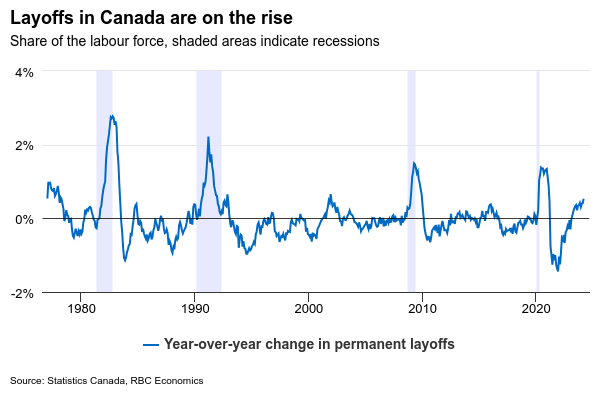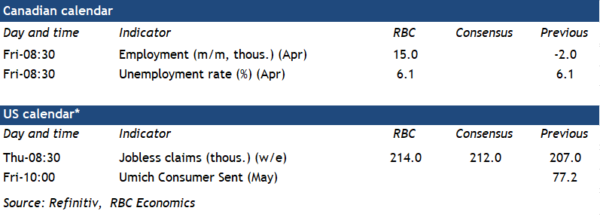The Canadian labour market report will be watched closely next Friday for further signs of deterioration in the country’s economic backdrop.
We look for an increase of 15,000 workers after a small 2,000 drop in employment in March. But the unemployment rate will hold steady at 6.1%—its highest level since January 2022 and up from 5.8% in February. Employment numbers have mostly continued to edge higher, but not fast enough to keep up with rapid labour force growth. The unemployment rate is up a full percentage point from a year ago. The uptick in unemployment to date has been driven by unusually longer job search times for new labour market entrants—particularly students—rather than job losses. But permanent layoffs have also begun rising more significantly and were up 40% from a year ago in March.
The Bank of Canada will be watching for signs of whether softening labour markets are pushing wage growth lower. Average hourly earnings were still more than 5% above year-ago levels in March, but other indicators of wage growth in Canada have been more mixed. Separately released payroll employment numbers showed wage growth running about two percentage points lower than in the Labour Force Survey. Lower job openings flag further slowing in hiring demand and business surveys widely point to slower wage growth ahead.















